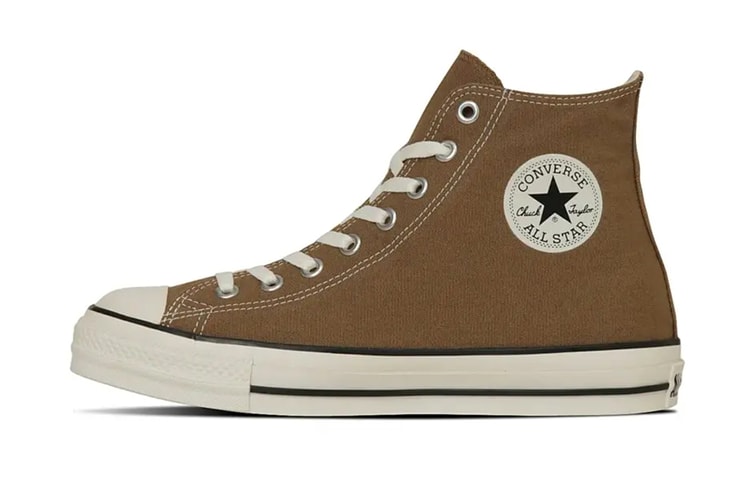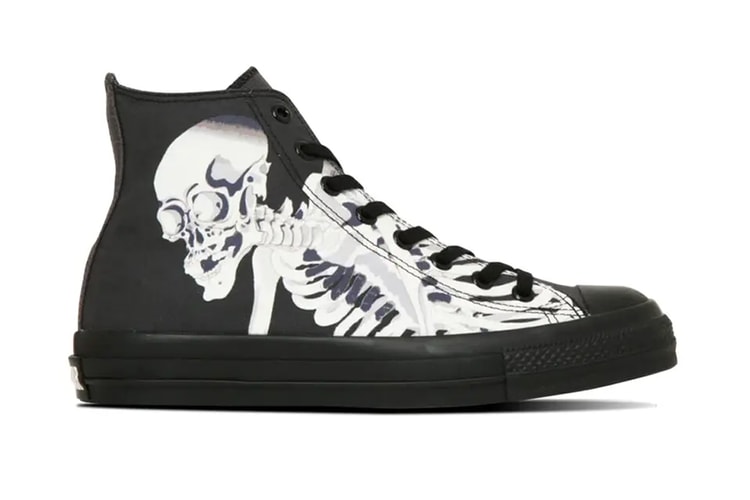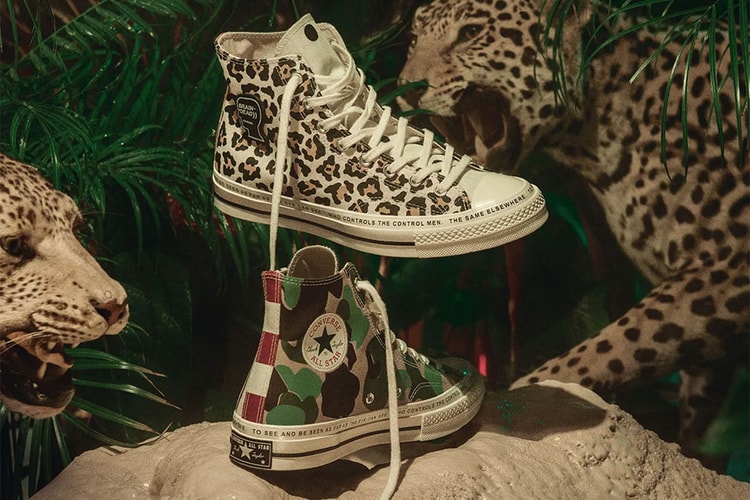Converse and the Chuck Taylor: How it All Came to Be
From inception to present day, we dissect exactly how Chucks became our everyday wardrobe staple.
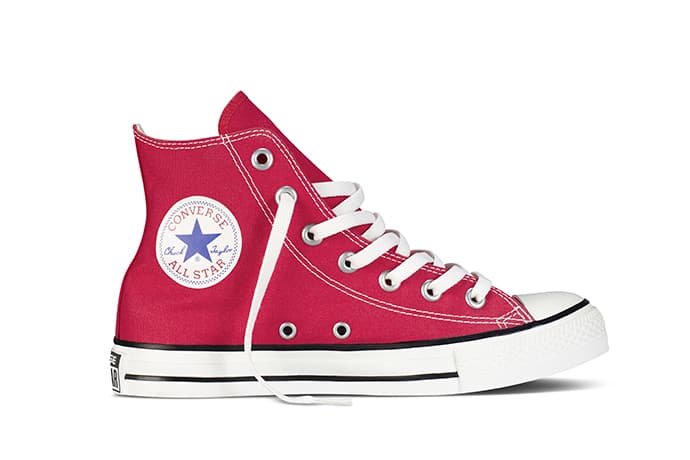




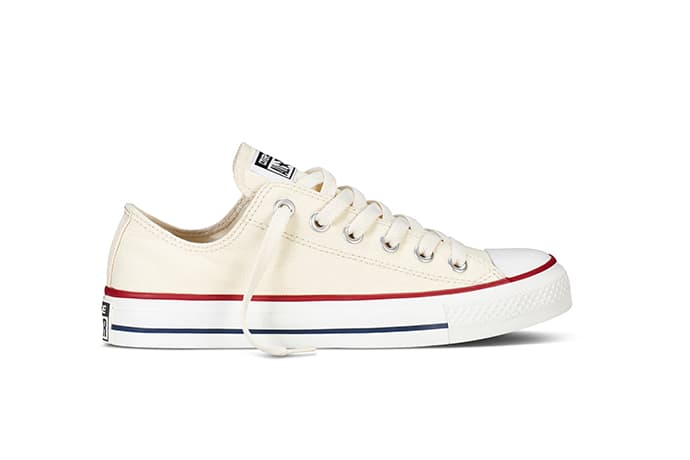
There are only a few shoes in history that have, and will forever, withstand the test of time. But what criteria is required for such a grand feat? Surely the design comes into play, a level of comfort is important, perhaps variation and distinction in aesthetic, even material choice. There are an infinite number of factors, but at the end of the day the people decide what they like in a shoe that they’ll resort to with no hesitation, and one “star” rises to the task time and time again: the Converse Chuck Taylor All Star.
The Chuck Taylor All Stars, or simply known as “Chucks,” is so effortlessly wearable. Its clean silhouette and simple use of materials ranging from rough canvas to smooth leather allow the user a chance to truly express themselves, whether it be on the basketball court or strolling down Main St. Customers cheer for the indescribable comfort it brings, and the sheer amount of colorways over the years will have you searching the ends of the world for just the right shade of orange or white to match whatever outfit you throw at it. And almost as an added bonus, Chucks tend to be more durable than its competitors as well. Converse, it seems, have engineered the perfect shoe; a mix of beauty, brawn, style and comfort, in a package that is both affordable and accessible, and with a history and pedigree that can’t be beat.
So how exactly did the Chuck Taylor come about? What did Converse have to go through to create this benchmark of a sneaker? We take a look back at the extensive history of the founder, the early designs, some critical historical points in its mid-day, all the way up to the ambitious-yet-achieved present day success it has garnered over the last century.

The Early Years
Born shortly after the Industrial Revolution, Marquis Mills Converse (1861-1931) originally started Converse as a rubber sole manufacturer, and broke ground on December 17, 1908 in Malden, Massachusetts. Initially conceived as a manufacturer of tennis shoes and shortly after for basketball purposes, the company’s health was linear in growth and progressed from galoshes to seasonal sneakers. 1917 was when Converse introduced the “non-skid” sneaker, which would later be renamed to a much less-technical and engaging “All Star” – this would eventually build the backbone of what we know the Chuck Taylor model to be today.
In 1922 Chuck H. Taylor signed onto the Converse team as a salesman, but began to coach for the company’s basketball team, aptly named The Converse All Stars, alongside his sales duties. This hire would serve as a double-edged sword for the company, hosting basketball clinics which also directly promoted the brand. A critical design change in the form of a corrugated edge and pivot button on the outsole respectively gave the shoe a new level of durability and performance that is found still to this day, but both the image that Chuck H. Taylor brought plus the upgrades in the shoe could not save the company from bankruptcy in 1929, primarily due to mismanagement and a poor parallel investment in rubber tires. Two years later, founder Marquis Converse dies of a heart attack in Boston, Massachusetts.
The Stone family then buys the Converse brand and would continue its ownership for the next 40 years. Shortly following the new management, Converse saw the introduction of the Jack Purcell tennis shoe, named after the Canadian badminton star and was manufactured by modern-day tire company B.F. Goodrich. Come World War II however, Converse showed its support for the American troops by shifting its focus almost entirely to the war efforts and began supplying protective footwear, boots, parkas and equipment. Publications and even technical support to the Air Force further aided in the efforts throughout the war until its victorious end in 1945. But the legacy of Converse and the Chuck Taylor didn’t end there.

The Later Years
The 50’s and 60’s saw a continued progression in the brand, which now released wades, galoshes, and boots for both hunting as well as fashion. However, the basketball shoe was never neglected, with Chuck Taylor continuing his basketball clinics and publishing a book of basketball fundamentals which were given away at sporting goods stores. A highlight feature of the Chuck Taylor, the ankle patch, was first added in 1962 and kept to this day, but in 1969 tragedy struck as Chuck Taylor saw his untimely death, only one year after his official induction into the basketball Hall of Fame in 1968. He was 67.
Converse entered the private entity market in 1981, after a purchase by Allied Corporation for a price of $100 million – three years later Converse would become the official shoe sponsor of the 1984 Olympic Games in Los Angeles, as well as being branded the “Official Shoe of the NBA” in 1985. Success, it seemed, was mounting up - numerous efforts like the “Choose Your Weapon” campaign with Larry Bird, Dr. J and Magic Johnson, and the CONS ERX collection solidified its presence in basketball and rounded out the mid to late 80’s. But come 1994, Converse hit a business milestone by becoming a publicly traded entity on the New York Stock Exchange – only one year after the world was introduced to Larry Johnson’s epic alter-ego Grandmama.

Present Day
The 2000s brought upon a lot of change to the company, with Nike’s purchase of Converse for $305 million in 2003 perhaps being the most impactful. But this acquisition would not mean the Chuck Taylors would suffer. Quite the opposite actually, as the rise of fame for the colorful high-top is seen on feet of influencers, artists, a-list actors in an unbelievable amount of movies (including its own role in blockbuster hit I, Robot starring Will Smith) and the overall general public. An ongoing collaboration with John Varvatos gave the casual kicks a step in the direction of premium apparel, while the 1HUND(RED) collection provided a blank canvas of sorts to 100 designers to create their own Chuck Taylors, all while donating proceeds to (PRODUCT)RED, the global fund to fight AIDS. Today, the Chuck Taylor continues to dominate the sneaker market with an exorbitant amount of releases every year, ranging from classic designs and simple colorways to truly inspired limited editions.
So where do we find Chuck Taylors now? Everywhere, it seems. Boutiques and retailers around the world carry their stock of Converse All Stars with pride, and see a huge amount of success in both sales and culture-defining style. It’s quite shocking to think that a company like Converse, with incredible high points and market success along with a fair share of hardship and loss, can hold onto a design and ethos behind the Chuck Taylors for so long. The people will forever love their Chucks, and we simply can’t get enough of what it was and what it has become.



